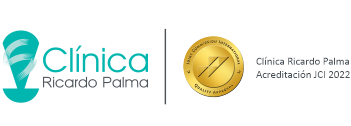×


- (+51) 01 411·4550 / (+51) 01 224·2224
- Av. Javier Prado Este 1066 Urb. Corpac - 15036 Perú
- International Department
-

August 22, 2020
The impact of coronavirus has changed our lives and our personal care. Masks have become a fundamental protection element to prevent the spread of COVID-19 infections. However, its permanent use has meant the appearance of new skin complications related to the time we wear it, characteristics of its manufacture, and the tolerance of each person.
“Facial dermatitis can be irritant, caused by the pressure and rubbing of very tight masks, masks not anatomically adjusted to the facial structure, or masks that move and are constantly repositioned, to which is added the humidity of breath and perspiration that makes the skin more vulnerable to physical stimulation. These reactions can happen to anyone. The skin shows redness, a burning sensation and, sometimes, tingling and itching”, explains Dr. Sandro Tucto, Dermatologist at Clínica Ricardo Palma.
Another form of reaction is allergic contact dermatitis. This is due to their various design components, generally synthetic, and the adjustment components such as garters or elastics.
“Acne-type reactions due to occlusion and humidity are also observed when wearing the masks for many hours, causing irritation, bacterial proliferation, and parasites of the skin itself. The accumulated fat causes the pores to close, producing impurities that prevent the normal secretion of the sebaceous glands of the face, which leads to genuine acne”, adds Dr. Tucto.
Another condition is rosacea. Rubbing, friction, high temperature, and humidity in this very sensitive skin lead to redness, pustules, and nodules that are placed in the central area of the face.
“All these reactions will be more visible in allergic skin types as they are thinner and has little fat production”, he explains.
Sports
Lockdown lifting allowed people to resume individual sports. However, sanitary measures include the use of masks while doing sports. Which is the best mask? Which is the most appropriate? There is no consensus on which one to use. It is recommended that they are semi-flexible and do not constantly rub the mouth or become moist. They should fit the face perfectly and, preferably, attached to the ears and washable.
Sportsmen or women must slowly get used to their use because not everyone tolerates them. It is recommended to remove them partially and at a social distance from other sportsmen or women when hydrating. If the mask is removed, the extended social distance is recommended, approximately 10 meters for runners and 20 meters for cyclists, to avoid micro-drops exhaled during physical exercise.
With Kids
It is better to keep kids at home. However, masks may be used from 2 years old. It is recommended to use reusable fabric ones, appropriate in size for their age and that fit the characteristics of each kid. There is no difference in terms of fabrics or ways of cleaning as compared to those for adults. The N95 and FFP95 unfiltered masks are recommended for kids at risk for comorbidities (asthma, diabetes mellitus, obesity, etc.)
Now, what is the lifespan of a mask? The classic light blue surgical ones should be for single use and then discarded. Their reuse or cleaning is not allowed, because humidity and the application of soaps, detergents, or disinfectants deteriorate their protection capacity. The duration of N95, NK95, or FFP 95 or 97 unfiltered masks will depend on their use and handling. It is recommended to use them for a week and then discard them
It is convenient to have more than one mask and alternate them, to preserve them better. Fabric masks (cotton, polyester, notex) should be worn for one week and then washed with soap and water. Do not do more than five washing cycles, then definitively throw them away. Repetitive washing reduces protective properties, concludes the specialist.
Dr. Sandro Tucto
Dermatologist at Clínica Ricardo Palma